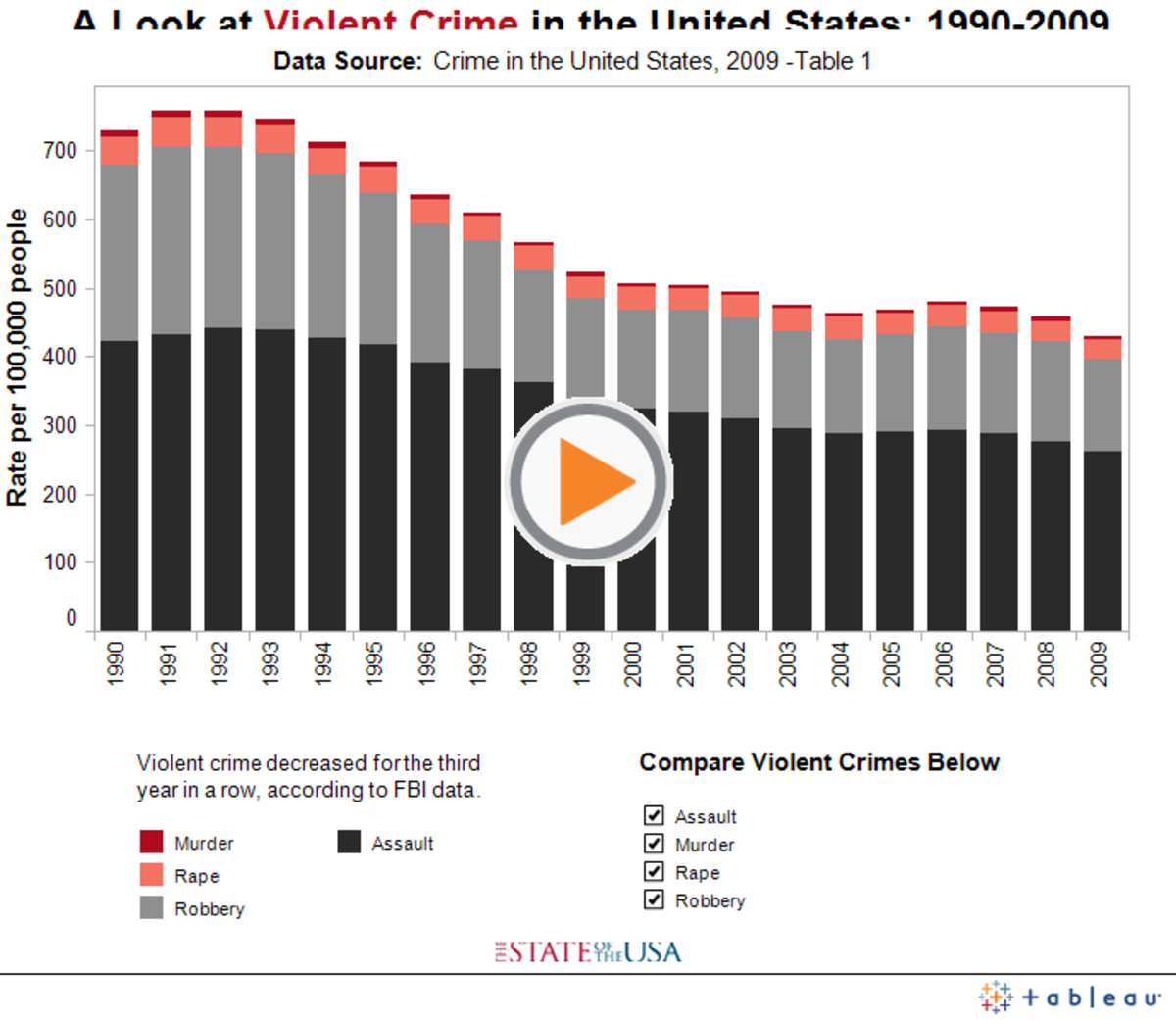Interesting Facts: 12 Facts and Statistics That Will Restore Your Faith in Humanity
Introduction
For a first glance, it would seem like humanity is heading towards a dark future. Terrorism is on the rise again, refugees are fleeing across Europe, Russia and the USA are in a tension once again and numerous diseases ravage the less developed countries.
However, human progress exists, overshadowed by this darkness. Improvements were made in the average person's life, both worldwide and in the USA. If you feel like the world gets only worse with each passing year, please consider these entries and statistics for some optimism and light in the gloom.
1. Humanity dealt a blow to air pollution

There has been a huge decrease in air pollution all over the world, with the USA itself cutting CO emission by a whole of 85% since 1980. Apart from Carbon Monoxide, marginal reductions were made in Ozone, Lead and Nitrogen Dioxide as well, resulting in a cleaner air for all.
If you ever doubt environmentalism and green regulations, just look at the statistics and give yourself a pat on the back, for humanity did achieve something to preserve mother nature!
More information:
2. Racial discrimination is dying out
With police violence and all the shootings about, one has to question any progress made in the terms of racial discrimination. However, looking at a more brighter side of life, specifically marriage between people of different racial background, the percentage of the population approving such has increased marginally through the 20th century, especially since 1995.
In 1959, only 4% of the USA's population claimed they'd approve interracial marriage. This number changed to a hefty 87% by 2013 and is on the rise ever since. Important to consider is the age of people asked, for 96% of those aged between 18 and 29 approve such a marriage, with the lowest being 70% for those above 65.
More information:

3. The amount of people on Earth living in poverty was halved in two decades
Many economists, including Malthus and Marx, feared that industrialization and population growth will result in global poverty. Malthus argued that food production can't rise in parallel with the population boom and therefore poverty will manifest in famines and hunger, while Marx warned about capitalism's effects and how the bourgeois-proletariat relationship will create a huge divide between the poor and the rich.
However, technological advancement and human solidarity proved both of them otherwise. Absolute poverty is defined as living out of less than 1.25 international dollars (adjusted to purchasing power) per day.
One of the UN's developmental goals was to halve global poverty from 1990 to 2015. Even with the financial crisis in the late 00s, this goal was achieved five years earlier! In 1990, more than 50% of the world population lived in absolute poverty, now this number is a mere 14%! Now that's what you can call progress!
More information:
- World Poverty — Our World in Data
Max Roser (2015) – ‘World Poverty’. Published online at OurWorldInData.org. Retrieved from: http://ourworldindata.org/data/growth-and-distribution-of-prosperity/world-poverty/ [Online Resource]
4. Marginal fall in violent crime despite growing population
Despite many claims that the USA is becoming more violent with each passing day, the statistics tell otherwise. While the widespread mass media does tend to announce lots of violent acts on a daily basis, the USA saw a constant fall in the amount of violent crimes despite the growing population. The only exceptions are the years of the financial crisis and 2001.
Over the course of 20 years, violent crime rates were cut almost to the half, and only between 2002 and 2011 the rate per citizen fell by 21.9%.
More information:
5. Illiteracy rates falling worldwide
The lack of literacy is an archaic problem that is still present in some areas of the Earth. However, economic development of third world countries led to an exponential fall in illiteracy worldwide.
A marginal improvement was achieved in the lowest developed parts of Africa between 1990 and 2015, adult literacy improving from 47% to 70% and youth literacy from 60% to 88%.
More information:
6. War-related casualties reached a historical minimum
While terrorism and war is shown on TV, the 21st century is probably the safest time to live so far when it comes to the threat of war. The amount of war casualties has been rising ever since the middle ages, only to take a wild turn after the second world war and enter a decline, with the 21st century having an almost-peace status quo that hasn't been witnessed on the Earth for centuries if not thousands of years.
In fact, someone living in 2012 had 1/10 the chance of dying in war than someone from 1950. So while terrorism and mass media may insinuate living in times of struggle and danger, we are far safer than those that lived a decade or multiple decades before.
More information:
- Globally, Deaths From War And Murder Are in Decline | Smart News | Smithsonian
The world is getting safer, even if it doesn't necessarily feel like it
7. A better treatment of animals

Due to more capital allocated to animal shelters, treatments and a more open society, the treatment of them became far better over the past few decades. The amount of euthanized cats and dogs in the states fell by 85% from 1970 to 2011, with the amount of pets doubling all over the USA.
Statistics also show that as much as 649 000 animals are successfully returned to their owners annually, and the general treatment of animals has improved over the course of the past decades to a humane and acceptable extent.
More information:
- Pet Statistics | ASPCA
How many pets are in the United States? How many animals are in shelters? - Behind the big drop in euthanasia for America's dogs and cats - CSMonitor.com
Fido and Fluffy are far more likely to survive a stint at the animal shelter today than 40 years ago. Population control and better practices by shelters and pet owners have improved the lot of dogs and cats.
8. Improving education both in the USA and worldwide
The USA's amount of high school graduate improved by a whole of 10% between 2000 and 2012, with a dropout rate that's only 6.6%. That's a huge step from the 60s where more than a quarter of Americans didn't make it to the diploma.
While sometimes perceived as an issue, the amount of people enrolling into tertiary education has increased as well, from a world-wide 9% in the relevant age group in 1970 to a prominent 26% in 2007. While this may lead to further problems, it shows a trend of more open, more accessible universities and colleges.
More information:
- Too Many Well Educated Workers: a Global Problem and a U.S. Policy Dilemma | U.S. JOBS GOING DOWN
SEVEN ITEMS FOR YOUR CONSIDERATION Data source: Global Education Digest 2009: Comparing Education Statistics Across the World, UNESCO Institute for Statistics, 2009. ————— Data source: Global Education Digest 2009: Comparing Education Statistics Acro - National high school graduation rates at historic high, but disparities still exist - The Washington
Four out of five students earn high school diploma but differences by race, income and disability persist

9. Overcoming cancer
Rising cancer-related death rates shook the world in the 90s and this continued until the mid 00s. However, with new medications invented, modernized checkups and early identification, being diagnosed with cancer no longer means a battle for death, or at least not worse chances than when having a serious illness.
From 2002 to 2011, cancer mortality decreased by:
- 18% for men
- 14% for women
- 23% for youth aged 0-19
Those diagnosed with cancer in the 70s were informed they would most likely die within a year, while those diagnosed in 2007 had an average 5.8 more years to live. Survival rates for certain types of cancer improved marginally, with colon cancer survival rate increasing more than seventeen-fold, and breast cancer mortality more than halved.
These are due to widespread screenings and attention raising programs as well as many new medications and treatment methods introduced to the world during the past decades, but especially during the past seven years.
More information:
- Dramatic increase in survival rates for some cancer types, study shows | Society | The Guardian
Macmillan Cancer Support hails improvements but warns of 'woeful' lack of progress in treating other forms of cancer - Cancer Statistics - National Cancer Institute
Key information about cancer statistics.
10. Defeating AIDS?
AIDS shook the world in the 90s as an aggressively spreading virus that sentences victims to a slow death that can be as drawn out and long as a decade.
However, infection rates have been dropping ever since the new century arrived, and treatments are getting better, allowing infected to live to be over 70 years old even if infected during their youth. HIV related deaths have been falling as well, signalling that precaution and widespread knowledge about the disease can in fact eradicate it.
More information:
- http://www.who.int/mediacentre/factsheets/fs360/en/
WHO fact sheet on HIV/AIDS with key facts and information on signs and symptoms, transmission, risk factors, testing and counselling, prevention, treatment and WHO response.
11. Safer roads

With an ever-increasing population both in the world and the USA one would expect traffic rates rising and the number of accidents and related injuries rising as well. This however is not the case.
The amount of fatalities has been in a fair decline, being lower than in 1963 right now. This is only toppled by the fatality rate per 100 million vehicle miles traveled, which fell to one-fifth of what it was in the sixties.
While the amount of people injured each yer in traffic accidents didn't decrease much compared to previous decades, the rate here halved, showing that the roads are much safer than they were decades ago.
12. Improving teenage life
In the USA, annual arrests for people aged 10-17 peaked at above 8000 per 100 000 youth in the mid 90s, and has been falling ever since, reaching a record low today of less than 4000. That means in 15 years teenage crime rates were halved.
Along with crime rates, teenage pregnancy rates have experienced a marginal fall as well. Birth rates per 1000 females aged 15-19 fell from 59.9 in 1990 to 26.5 in 2013, almost completely halved. However, important to examine that in 2000 the rate was still 47.7, meaning that the major decrease was mostly achieved during the 00s.
- Trends in Teen Pregnancy and Childbearing - The Office of Adolescent Health
The Office of Adolescent Health (OAH) coordinates adolescent health programs and initiatives across the U.S. Department of Health and Human Services related to adolescent health promotion and disease prevention. - Juvenile Arrest Rates - USA government statistics
© 2015 Medvekoma








